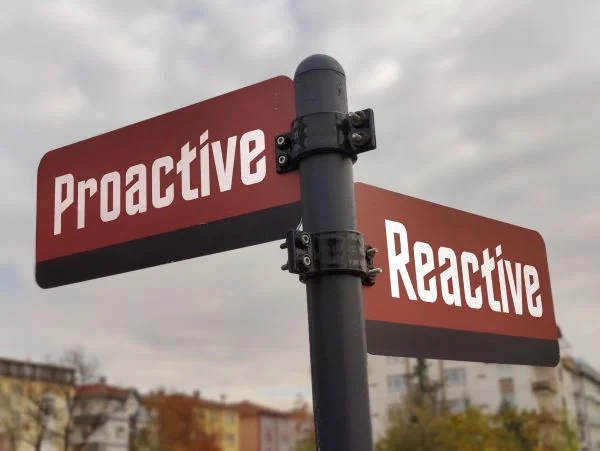When the market economy, government or community undergoes changes, capabilities and practices that worked before may cease to be effective. You may notice that customers have changed their buying behaviors, team members’ priorities have been altered or government rules around compliance is now impacting your workflow. From the unprecedented (such as the regulatory and economic changes due to COVID-19) to day to day minor disruptions it is important to consider what expectations and/or capabilities will need to be modified.
Reevaluating expectations and capabilities during change, can exponentially benefit the bottom-line
It’s not just the unprecedented that warrant a reappraisal. Let’s look at some scenarios where expectations and capability don’t quite match reality, making the experience for all concerned more painful than it needs to be.
Scenario 1: You work with your organization’s communications team in rolling out a monthly newsletter that helps readers stay fit. Lately, you have noticed that the readership has dropped. Both you and the communications team are wildly debating correlation between poor readership and content quality. This has resulted in some animosity which is prolonging the article development and review process. These additional meetings and iterations have increased the number of hours all spend at work during a typical week. What’s worse, the readership continues to decline and now you have readers unsubscribing from your mailing list threatening to impact your market share at a time when your competitor is making strides in theirs.
Scenario 2: Your organization has support centers in different locations. One of these locations is far exceeding the customer satisfaction goals. Organizational Development asked experts from this location to share best practices with other locations to replicate success. The recipient locations don’t deny the validity of best practices but express concerns about integrating these while continuing to meet their other responsibilities. Meanwhile, the global average call handling times and call wait times have been radically increasing impacting the customers that need support.
Scenario 3: Your organization has historically catered to customers through an online platform. Marketing channels its efforts across a few other forums where potential customers are likely to have memberships. This had worked in the past. Recently, the efforts don’t consistently translate into business opportunities. What you also notice is potential customers have already committed to do business with other companies by the time your marketing team makes contact, delaying opportunities for at least another fiscal year. The sales team is rolling out new programs that are not coordinated with marketing causing misalignment and missed opportunities to leverage each-others initiatives increasing frustration in both departments. You know that your solution surpasses the value offered by other companies. Yet when you do end up getting business, the solutions, despite their practicality, are difficult to implement, damaging the customer experience as reflected in the Net Promotor Score.
Sometimes those dashboard numbers are observable behaviors that point towards a solution
How to remedy the mismatch
Track: Track different organizational metrics or performance indicators to detect a mismatch. Sometimes, performance indicators are not just numbers on a dashboard but are observable behaviors. This is especially the case when you are evaluating collaboration effectiveness. In fact, from time to time, it is important to reappraise if the metrics you track are relevant to measuring organizational, departmental, team or individual success.
Questions that might clarify thinking during this step are:
- What are the questions you are asking to track metrics and performance?
- How are you organizing the information visually?
- How are you deciding who to engage to track data accurately?
- What are you choosing to focus on and remedy?
Analyze: Gather information to test a variety of theories that could explain the mismatch. Use divergent techniques by involving appropriate stakeholders to brainstorm a vast range of theories that analyze the gathered information. Design quick and easy experiments to see if you can establish a cause-effect relationship between the mismatch you wish to address and the most likely theory. This paves way for sustainable solutions.
For example, if you think back to Scenario 1, there can be numerous reasons for diminishing readership. Capturing details such as; the locations showing reduced readership, month the readership reduced, and actual magnitude of reduction helps put the problem in perspective. This may even ease one’s anxiety and allow for channeling energy towards problem solving. If finding the reason for reduced readership is key to regaining market share, divergent thinking techniques and careful evaluation can help reveal the cause or identify multiple causes and get you closer to finding solutions for a situation that felt out of control.
Questions to make analysis easier in the short and long term are:
- How well do your information sources understand your intent?
- How do you determine the best sources to obtain data?
- How focused are your brainstorming sessions?
- How are next steps communicated to contributors?
Implement: Once we have established what’s really going on, the solution may be to adapt the environment, tools, resources and/or processes. The general tendency is to implement sophisticated solutions. This may be necessary for complex situations, however keep an open mind that the cause of a mismatch might be addressed with a minor tweak. If this happens to be the case, it’s vital to implement a minor change and observe results. A way to pinpoint the slightest tweak that will generate remarkable results is to break things down and prioritize before setting out to track, gather and analyze information.
Timely communication of expectations with steps for clarification, comprehension and practice help solutions take root. With clarified expectations and the opportunity to practice, individuals determine their strengths and develop the skills they need. A system that supports skill development creates a fail-safe environment to try out new things and matches expectations and capability to reality. What’s more, pushing boundaries and creating autonomy builds the agility needed to meet future changes.
Questions to aid effective implementation are:
- How well do you study the role of environment, tools, resources and processes on goal accomplishment?
- What is your system to monitor results of a change?
- How do you support change?
- How do you contribute to capability development?
When the implemented solution becomes an SOP, you know you’re doing something right
What success looks like
You know you’ve been successful at matching expectations, capability and reality when the solution you’ve implemented fixes a problem, saves your team extra effort and works over duration needed. The ultimate is when this fix becomes a SOP (Standard Operating Procedure) due to its effectiveness and simplicity. Even better is when new opportunities emerge as a result of your work, such as; you and your communications team find new ways to engage with customers enhancing market share; your support centers balance customer satisfaction with availability and expertise; your marketing team creates a model that meaningfully caters to the needs of existing and future customers.
Too often remedies are knee-jerk reactions that serve as interim fixes that create extra work, increased complexity and the peril of causing new problems in the future. If your first attempt is not successful, it is only an invitation to revisit your Track-Analyze-Implement cycle to generate the right ecosystem. Matching expectations, capability to reality is an iterative and evolving process. It’s no different than any other discipline and the more you do it, the better you get at it.
About Kepner-Tregoe
Software and templates don’t solve problems. People solve problems!
What kind of people? People who are curious, ask great questions, make decisions based on facts, and are empowered to lead. They remain focused under pressure and act confidently to do what needs to be done. You’ll find these problem solving leaders both at our clients and here at Kepner-Tregoe. For over 60 years, Kepner-Tregoe has empowered thousands of companies to solve millions of problems. If we can save millions for a manufacturer, restore IT service for a stock exchange, and help Apollo 13 get back from space, we can help your business achieve success.



